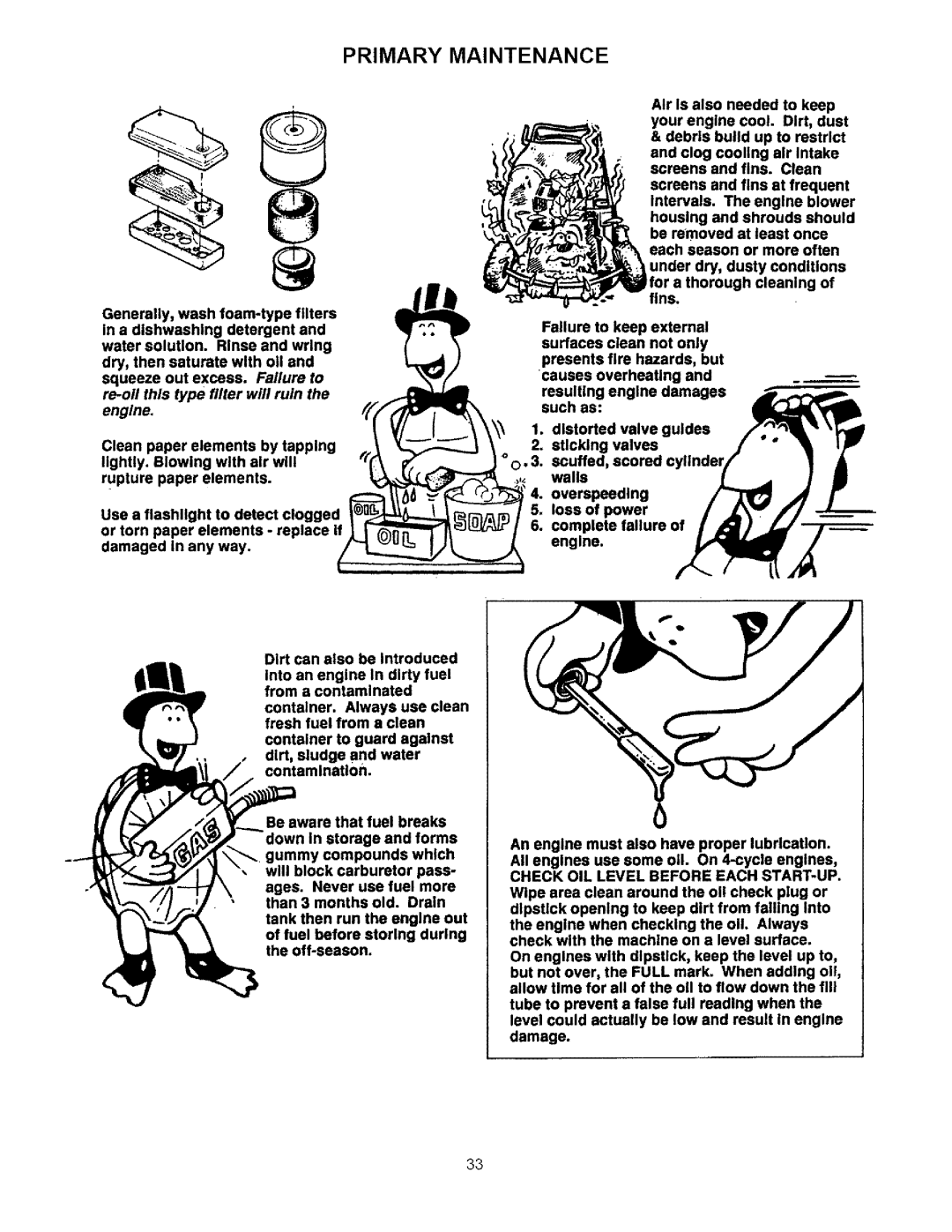
PRIMARY MAINTENANCE
Generally, wash
Clean paper elements by tapping lightly. Blowing with air will
rUPture paper elements.
Use a fleshllght to detect clogged or torn paper elements - replace If damaged In any way.
Dirt can also be Introduced
Into an engine In dirty fuel from a contaminated
container. Always use clean fresh fuel from s clean
container to guard against dirt, sludge and water contamination.
Be aware that fuel breaks
down In storage and forms gummy compounds which will block carburetor pase- ages. Never use fuel more than 3 months old. Drain tank then run the engine out of fuel before storing during the
Air Is also needed to keep your engine cool. Dirt, dust
&debris build up to restrict and clog cooling air Intake screens and fins. Clean
screens and fins at frequent Intervals. The engine blower
housing and shrouds should be removed at least once each season or more often
under dry, dusty conditions
for a thorough cleaning of fins.
Failure to keep external surfaces clean not only presents fire hazards, but causes overheaUng and resulting engine damages such as:
1.distorted valve guides
2.sUcking valves
,.3. scuffed,
14. walls overspeedlng
5.loss of power
6.complete failure of engine.
An engine must also have proper lubrication.
All engines use some oil On
CHECK OIL LEVEL BEFORE EACH START-UP.
Wipe area clean around the oll check plug or dipstick opening to keep dirt from falling Into the engine when cbecklng the o11. Always check with the machine on a level surface.
On englnee with dipstick, keep the level up to, but not over, the FULL mark. when adding o11, allow time for all of the oll to flow down the fill tube to prevent a false full feeding when the level could actually be low and result In engine damage.
33
